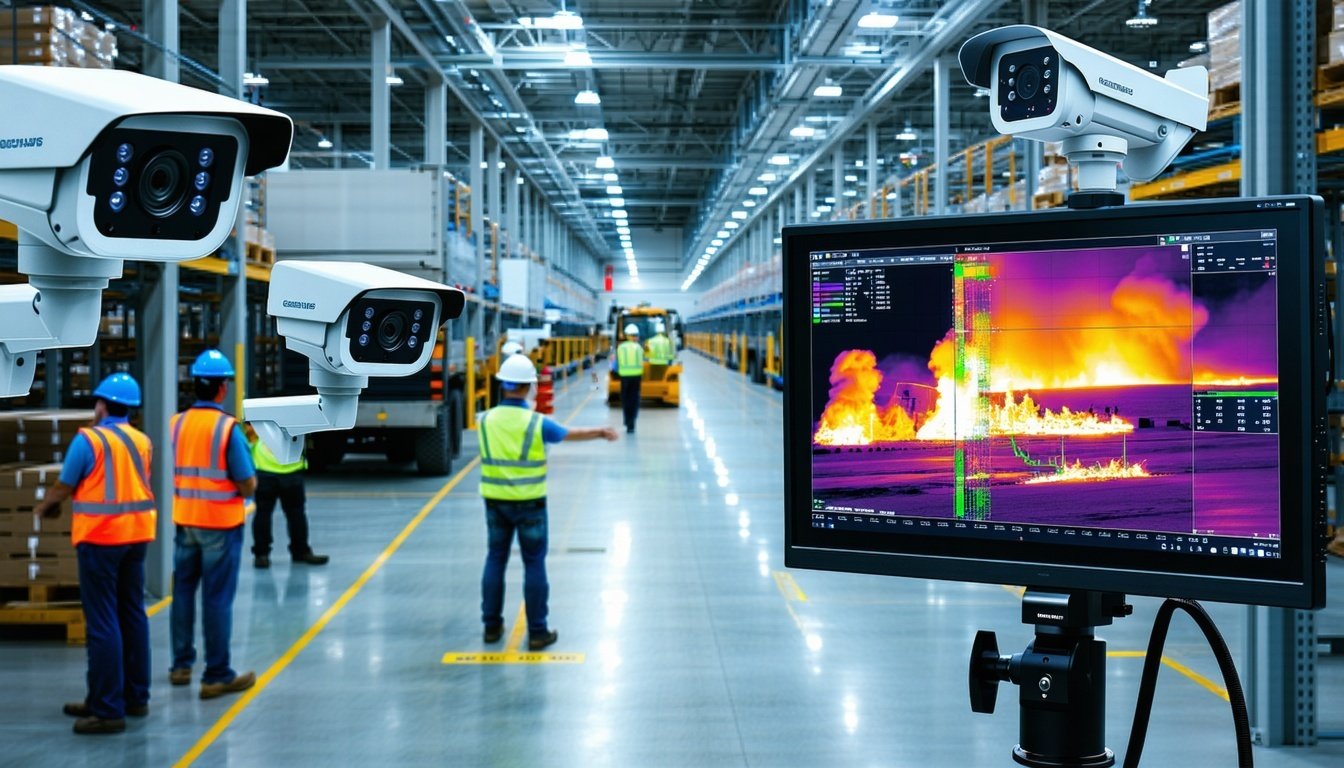Optimize industrial safety with computer vision

Discover how computer vision can revolutionize the safety and productivity of your industrial sites, with real-life use cases and measurable results.
Introduction to computer vision in industry
In the industrial world, safety and operational efficiency are top priorities. However, despite technological advances, many industrial sites continue to face major challenges in these areas. Computer vision, a technology that uses artificial intelligence algorithms to analyze images and video in real time, offers promising solutions for transforming industrial site management.
Computer vision makes it possible to continuously monitor critical infrastructures, automatically detect incidents and optimize the management of flows and resources. Thanks to this technology, companies can not only improve the safety of their employees, but also increase the productivity of their operations.
Protect employees with PPE detection
Wearing personal protective equipment (PPE) is essential to ensure the safety of workers in the field. However, it can be difficult to constantly check that all employees are complying with this rule. Computer vision offers an effective solution, automatically verifying that PPE is being worn.
Using intelligent cameras and image recognition algorithms, it is possible to detect in real time whether an employee is not wearing the required safety equipment. In the event of non-compliance, an alert can be triggered to enable rapid intervention. This technology considerably reduces incidents of non-use of PPE, and protects teams in the field.
Preventing fires with thermal vision
Fires are a major hazard in industrial environments. Rapid, accurate fire detection is crucial to minimizing damage and ensuring worker safety. Thermal vision, an application of computer vision, enables instant detection of fire outbreaks.
Using thermal imaging cameras, computer vision can identify abnormal temperature variations that indicate the start of a fire. This technology enables immediate intervention, reducing the risk of fire spreading. Thanks to this solution, industrial sites can improve their ability to prevent fires and protect their infrastructures.
Optimize picking and improve logistics productivity
Picking is a crucial stage in the supply chain. Poorly organized picking areas can lead to inefficiencies and delays in operations. Computer vision makes it possible to analyze picking zones and optimize routes to improve logistics productivity.
Using cameras and analysis algorithms, it is possible to visualize and analyze flows in real time. The data collected enables bottlenecks to be identified and adjustments made to make picking routes more fluid. This optimization translates into increased productivity and reduced losses due to anomalies or inefficient picking phases.
Real-time intrusion detection and management
Industrial site security also involves preventing unauthorized intrusions. Computer vision can detect any suspicious presence and trigger alerts in real time. Using surveillance cameras and recognition algorithms, it is possible to continuously monitor sensitive areas and react rapidly in the event of an intrusion.
This technology offers proactive surveillance, reducing the risk of theft, vandalism or other malicious activity. By centralizing data from different hubs, companies can compare the security performance of their sites and take the right decisions to reinforce the protection of their infrastructures.
Monitoring lone workers for greater security
Isolated workers, operating alone in sensitive areas, are particularly vulnerable to incidents. Computer vision enables these areas to be monitored, and alerts to prolonged immobility or individual incidents. This continuous monitoring ensures rapid intervention should the need arise, guaranteeing the safety of lone workers.
Thanks to this technology, companies can better protect their employees and reduce the risk of serious accidents. Lone worker monitoring also helps to improve employee well-being by providing an extra layer of security.
Real-time performance analysis and adjustments
One of the main advantages of computer vision is its ability to provide real-time data on industrial site performance. By analyzing key indicators over select periods, companies can compare, adjust and improve their operations.
Centralized dashboards enable data from existing cameras to be visualized and analyzed. The actionable insights gained from this analysis help to streamline workflows, automate incident detection and optimize industrial site performance. This data-driven approach enables companies to make informed decisions and maximize the efficiency of their operations.
Concrete benefits and measurable results of computer vision
Companies that adopt computer vision to manage their industrial sites can enjoy many concrete, measurable benefits. These include a 50% reduction in PPE-related incidents, a 60% increase in the speed of intrusion detection, a 35% improvement in field productivity thanks to better team coordination, and a 40% reduction in losses due to anomalies or inefficient picking phases.
These results demonstrate the effectiveness of computer vision in transforming the safety and productivity of industrial sites. By adopting this technology, companies can not only protect their employees, but also optimize their operations and improve their overall performance.

